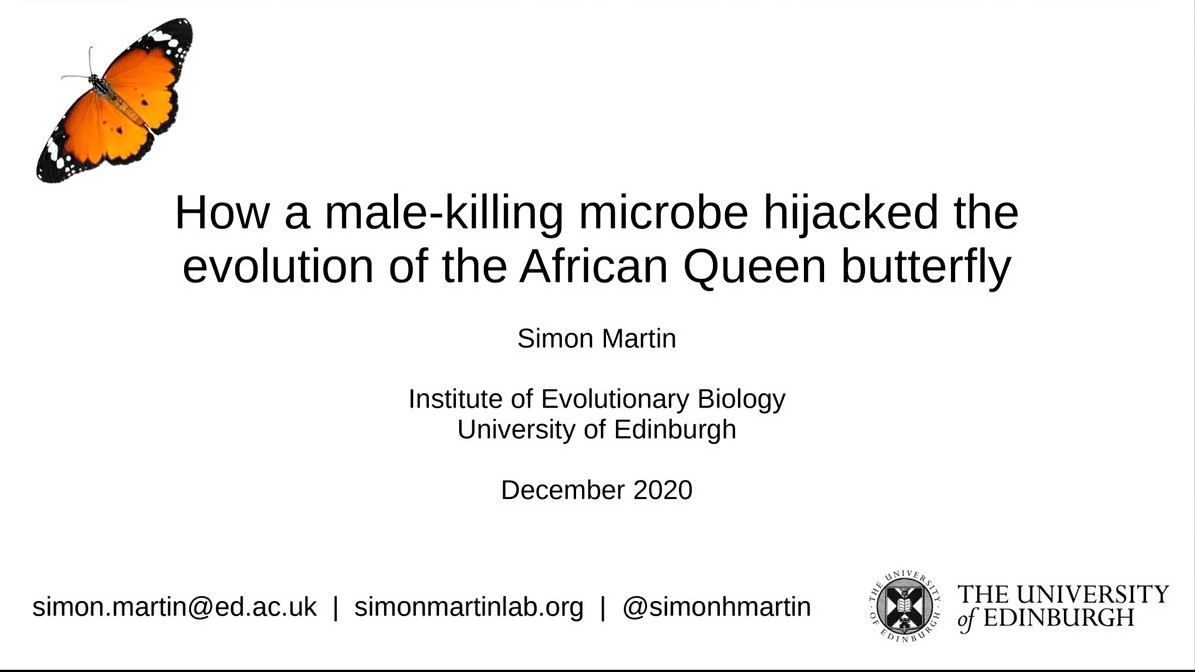
Biography
I'm originally from South Africa, where I did my undergraduate and master’s degrees at the University of Pretoria. I moved to the UK for my PhD at the University of Cambridge, where I worked on the evolutionary genetics of Heliconius butterflies. There I developed a strong interest in speciation, the process by which new species form, and the effects of hybridization between species. I remained in Cambridge after my PhD on a four-year research fellowship. For the past two years I have been based at the University of Edinburgh, where I am funded by a Royal Society research fellowship. My research group works on the evolutionary genetics of lepidoptera, with an overall aim of understanding how various evolutionary forces shape patterns of genetic diversity in nature.
